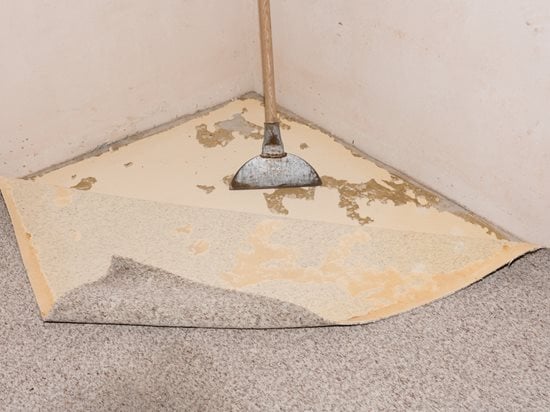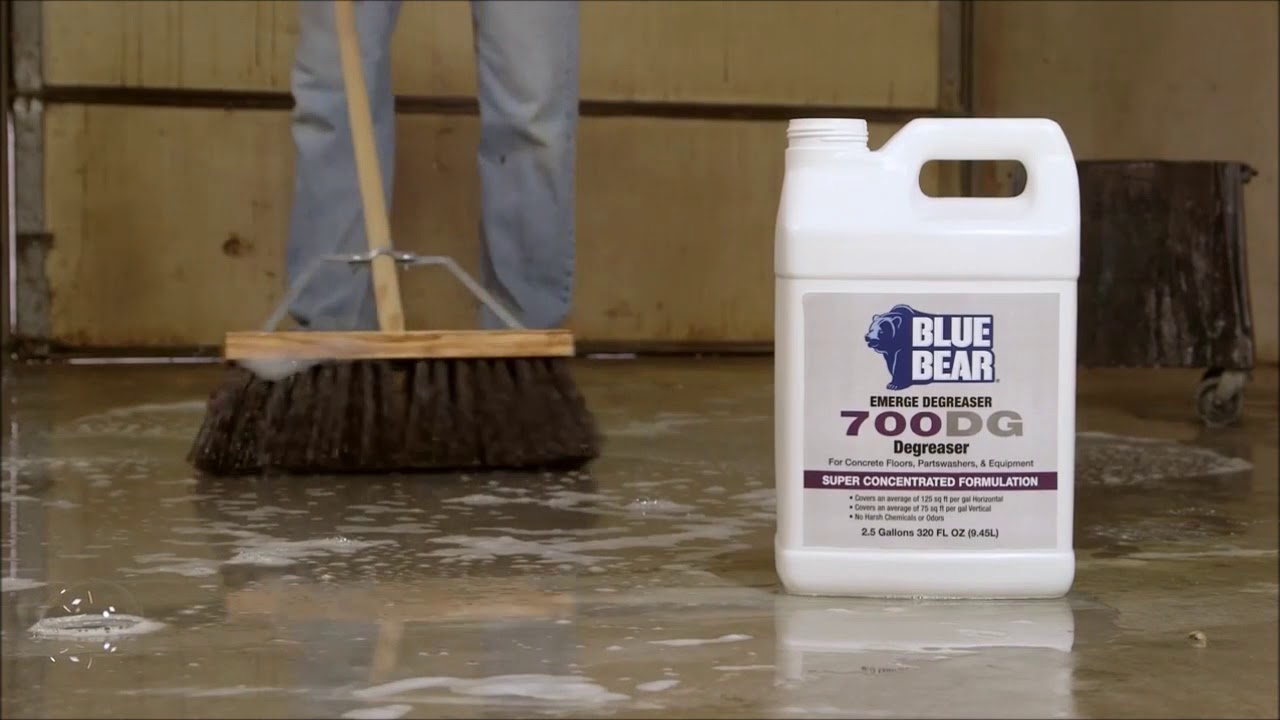Carpet glue typically takes 24 to 72 hours to dry completely. The drying time may vary based on the type and brand of the glue as well as environmental conditions.
When installing new carpet, it’s important to consider the drying time of the adhesive to ensure a successful and long-lasting bond. Understanding the specific drying time for carpet glue is crucial for planning a smooth and efficient installation process. We will delve deeper into the factors that affect the drying time of carpet glue, as well as tips for accelerating the drying process.
By the end, you will have a comprehensive understanding of how long carpet glue takes to dry and how to effectively manage the installation timeline to achieve optimal results for your carpeting project.

Credit: www.concretenetwork.com
Table of Contents
Understanding Carpet Glue Drying
Factors Affecting Drying Time
Temperature: High temperatures speed up the drying process.
Humidity: Low humidity levels aid in quicker drying.
Type of Glue: Different adhesives have varying drying times.
Importance Of Quick Drying
Prevents Disruption: Quick drying allows for immediate use of the carpet.
Reduces Potential Damage: Minimizes the risk of accidents or damage to the carpet.
Enhances Adhesion: Ensures strong bonding between the carpet and the floor.
Types Of Carpet Glue
When it comes to installing carpet, choosing the right type of glue is essential for a reliable and long-lasting bond. There are two main types of carpet glue commonly used: water-based adhesives and solvent-based adhesives.
Water-based Adhesives
Water-based adhesives are a popular choice for carpet installation due to their ease of use and low toxicity. These adhesives are typically formulated with a combination of water, synthetic polymers, and additives. When applied, the water in the adhesive evaporates, leaving behind a strong bond between the carpet and the subfloor.
One of the significant advantages of water-based adhesives is their quick drying time. Typically, water-based adhesives can dry within 24 to 48 hours, depending on factors such as humidity levels and temperature. However, it’s always recommended to consult the manufacturer’s instructions for specific drying times.
Moreover, water-based adhesives are also known for their environmentally friendly properties. They have low volatile organic compound (VOC) emissions, making them a safer option for indoor air quality. This aspect is especially important for individuals with respiratory sensitivities or concerns about the impact of chemicals on their living spaces.
Solvent-based Adhesives
Solvent-based adhesives, also known as epoxy adhesives, are another type frequently used in carpet installation. These adhesives are composed of solvents, synthetic resin, and a hardening agent, providing a strong and durable bond.
Compared to water-based adhesives, solvent-based options have a longer drying time. Due to the evaporation of solvents, it can take up to 72 hours or more for the adhesive to fully dry. The drying time varies based on factors such as humidity, temperature, and the type of solvent used in the adhesive.
It’s crucial to note that the prolonged drying time of solvent-based adhesives is important to ensure a secure bond between the carpet and subfloor. Rushing the process may compromise the overall quality of the installation.
However, solvent-based adhesives do have some drawbacks. They typically have a stronger odor and higher VOC emissions compared to water-based adhesives. Adequate ventilation is essential during and after installation to minimize any potential health risks.
Drying Times For Different Carpet Glues
Carpet glue drying times vary depending on the type, with some taking 24 hours to fully set. It’s crucial to let the adhesive cure completely before walking on or installing heavy furniture on the carpet to ensure a secure bond.
When it comes to installing carpet, the drying time of the glue used is an important factor to consider. Different carpet glues have varying drying times, depending on their composition and application method. Understanding the drying times for different types of carpet glues can help you plan your project effectively and ensure a successful installation.
Water-based Adhesive Drying Time
Water-based adhesive is a popular choice for carpet installation due to its low odor and environmental friendliness. This type of adhesive is typically made from water-soluble polymers that form a strong bond when dry. The drying time for water-based adhesive can vary based on factors such as humidity, temperature, and the thickness of the glue layer. In general, water-based carpet glue takes anywhere from 1 to 24 hours to dry completely. It is crucial to allow sufficient drying time before subjecting the carpet to heavy traffic or furniture placement to avoid any potential damage.
Solvent-based Adhesive Drying Time
Solvent-based adhesive, on the other hand, is known for its quick drying time and strong bond. This type of adhesive contains volatile organic compounds (VOCs) and requires proper ventilation during application. Solvent-based carpet glue typically dries within 2 to 6 hours, making it a suitable choice for projects that require a fast turnaround time. However, it is important to note that solvent-based adhesives may emit strong fumes during the drying process, so adequate ventilation is necessary to ensure a safe and healthy environment.

Credit: www.norkan.com
Optimizing Drying Process
Optimizing Drying Process:
Proper Ventilation
Ensure proper ventilation by opening windows and using fans to circulate air.
Allow fresh air to flow through the space to speed up drying.
Ideal Temperature And Humidity Levels
Maintain ideal temperature between 70-80°F for optimal drying.
Keep humidity levels around 40-60% to prevent excessive moisture.
Check the drying time required for the specific carpet glue used, as it can vary.
Summary:
Use proper ventilation and control temperature/humidity for efficient drying.
Accelerating Drying Time
The drying time of carpet glue can depend on various factors, such as temperature, humidity, and the type of adhesive used. In general, carpet glue can take anywhere from a few hours to a couple of days to dry completely. However, there are techniques that can help speed up the drying process. By utilizing air movers and dehumidification techniques, you can significantly reduce the drying time of carpet glue, allowing you to enjoy your newly installed carpet sooner. Let’s explore these methods in more detail!
Use Of Air Movers
Air movers are powerful devices that circulate air and promote evaporation. By placing air movers strategically around the area where the carpet glue has been applied, you can accelerate the drying time. These machines work by moving a large volume of air quickly, which helps to evaporate moisture from the adhesive. The increased airflow also aids in preventing the buildup of humidity, reducing the chances of mold or other moisture-related issues.
Dehumidification Techniques
Dehumidification plays a crucial role in speeding up the drying process of carpet glue. High humidity levels can extend the drying time significantly. By utilizing dehumidification techniques, you can remove excess moisture from the environment, creating optimal conditions for the adhesive to dry quickly. Dehumidifiers extract moisture from the air, reducing the relative humidity and facilitating faster drying. This method is especially useful in humid climates or during wet seasons when moisture retention is higher.
In conclusion, if you’re looking to expedite the drying time of carpet glue, the use of air movers and dehumidification techniques can be highly effective. By increasing airflow and reducing humidity levels, these methods can help accelerate the drying process, ensuring that your carpet is ready for use in a shorter timeframe. Remember to follow specific manufacturer guidelines for the adhesive you are using, as drying times may vary. Enjoy your fresh, newly installed carpet sooner by employing these techniques!
Precautions And Best Practices
When dealing with carpet glue, taking precautionary measures and following best practices is crucial for a successful installation. Here are some essential guidelines to consider:
Avoiding Foot Traffic
To ensure proper adhesion and drying of the carpet glue, it’s important to minimize foot traffic in the installation area. Advise individuals to refrain from walking on the freshly glued carpet until it has fully dried to prevent any disruption or damage.
Furniture And Carpet Installation
When working with carpet glue, it’s imperative to plan the furniture and carpet installation carefully. Ensure that the adhesive has completely dried before installing the furniture and carpet to avoid any compromised adherence and potential rework.
Impact Of Climate And Environmental Factors
In high humidity environments, carpet glue can take longer to dry due to the moisture content in the air.
Excess moisture in the air can hinder the evaporation process, delaying the drying time of the adhesive.
In cold climates, carpet glue may take more time to dry as lower temperatures slow down the drying process.
Conversely, in warm climates, carpet glue tends to dry faster as heat promotes quicker evaporation.

Credit: www.amazon.com
Frequently Asked Questions
How Long Does Carpet Glue Take To Set Up?
Carpet glue typically takes 24 to 72 hours to set up completely. Proper ventilation and temperature can affect the setting time.
How To Make Carpet Glue Dry Faster?
To make carpet glue dry faster, ensure good ventilation, low humidity, and warmer temperatures in the room. Use fans or heaters to speed up the drying process. Avoid walking on the carpet until the glue is completely dry.
Does Carpet Glue Dry?
Yes, carpet glue dries after application, forming a strong bond between the carpet and the underlying surface.
How Long To Let Rug Glue Dry?
Let the rug glue dry for at least 24 hours.
Read Next:
Conclusion
After considering carpet glue drying time, it’s crucial to follow instructions for best results. Timely drying prevents issues with installation and ensures longevity of your carpet. Remember, patience is key when waiting for carpet glue to set completely. Proper drying ultimately leads to a successful carpet installation.
